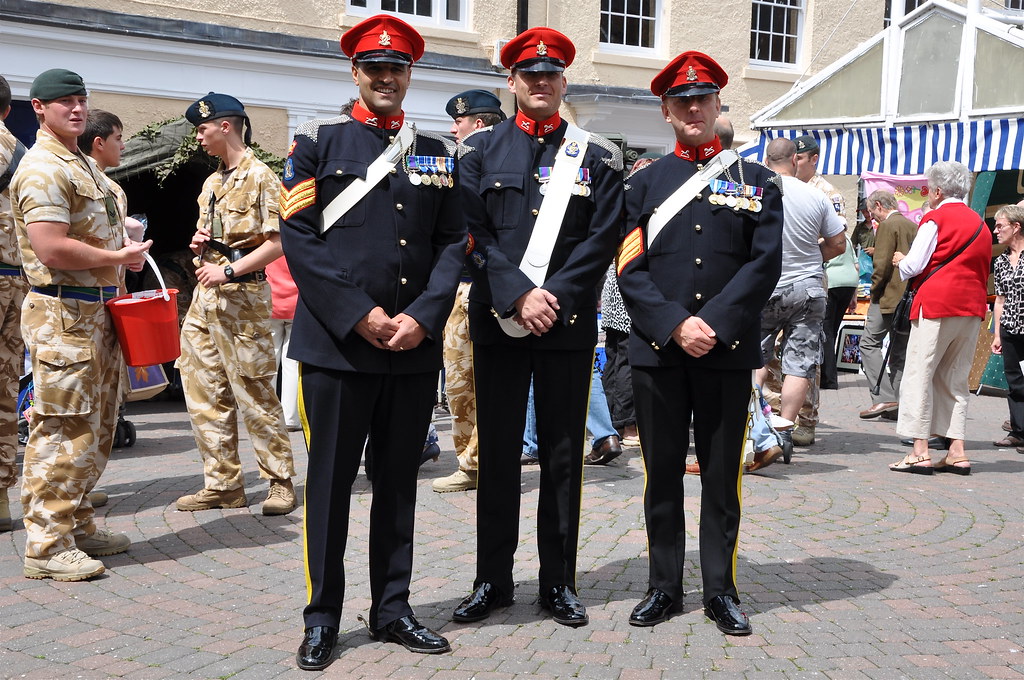
The Queen’s Royal Hussars (The Queen’s Own and Royal Irish) is a distinguished cavalry regiment in the British Army, known for its rich history, traditions, and modern operational capabilities. Formed on September 1, 1993, through the amalgamation of The Queen’s Own Hussars and The Queen’s Royal Irish Hussars, the regiment proudly upholds a legacy that spans centuries of British military history.
Historical Background
The Queen’s Royal Hussars (QRH) inherit the traditions and battle honors of two antecedent regiments:
- The Queen’s Own Hussars (QOH): Formed in 1958 by amalgamating the 3rd The King’s Own Hussars and the 7th Queen’s Own Hussars. Both regiments were originally light cavalry units raised in the late 17th century, with distinguished service in the Napoleonic Wars, the Crimean War, and both World Wars.
- The Queen’s Royal Irish Hussars (QRIH): Established in 1958 from the merger of the 4th Queen’s Own Hussars and the 8th King’s Royal Irish Hussars. These regiments also had illustrious histories, with notable involvement in the Peninsular War, the Charge of the Light Brigade during the Crimean War, and numerous campaigns during the World Wars.
Structure and Organization
The Queen’s Royal Hussars are part of the Royal Armoured Corps, equipped to perform various roles, from armored reconnaissance to direct combat. The regiment is structured into several squadrons, each with specific responsibilities and capabilities.
Key Components:
- A Squadron: Often tasked with reconnaissance and intelligence-gathering missions.
- B Squadron: Typically equipped with main battle tanks for heavy armored engagements.
- C Squadron: Similar to B Squadron, specializing in armored warfare.
- D Squadron: Provides support with a variety of armored vehicles, including those used for logistical and engineering tasks.
- Headquarters Squadron: Manages the regiment’s logistics, administration, and command functions.
Operational Role
The Queen’s Royal Hussars are equipped with the Challenger 2 main battle tank, a highly advanced and formidable vehicle. Their operational roles include:
- Armored Warfare: Engaging in direct combat with enemy forces using their Challenger 2 tanks.
- Reconnaissance: Conducting patrols and gathering intelligence on enemy positions and movements.
- Peacekeeping: Participating in international peacekeeping missions, contributing to stability in conflict zones.
- Support Operations: Providing logistical and engineering support in various military operations.
- Training and Advisory: Assisting in the training and development of allied and partner nation forces.
Notable Deployments
Since its formation, The Queen’s Royal Hussars has been involved in numerous significant deployments, demonstrating its versatility and effectiveness:
- Operation Granby (Gulf War): The regiment participated in the liberation of Kuwait, using their Challenger 1 tanks to significant effect.
- Bosnia and Herzegovina: Engaged in peacekeeping operations during the Yugoslav Wars, helping to maintain stability in the region.
- Kosovo: Deployed as part of NATO’s peacekeeping efforts in the aftermath of the Kosovo War.
- Iraq (Operation Telic): Played a vital role in the invasion of Iraq in 2003 and subsequent stabilization efforts.
- Afghanistan (Operation Herrick): Contributed to counter-insurgency operations and the training of Afghan security forces.
Traditions and Culture
The Queen’s Royal Hussars maintain a rich set of traditions, reflecting their historical roots and regimental pride:
- Motto: “Mente et Manu” (By Mind and Hand), emphasizing intelligence and skill in their operations.
- Cap Badge: Combines elements from both antecedent regiments, featuring a Prussian eagle and an Irish harp, symbolizing their heritage.
- Regimental Marches: “The Light Cavalry” and “The Galloping Major,” reflecting their cavalry traditions.
- Regimental Days: Celebrating significant historical events and battles from their antecedent regiments.
- Regimental Museum: The QRH maintains a museum that showcases its history, including artifacts, uniforms, and records of past service.
Modern Role and Adaptability
The Queen’s Royal Hussars continue to evolve to meet the demands of contemporary military operations. Their adaptability ensures they remain capable of responding to a wide range of scenarios, from high-intensity conflict to peacekeeping and humanitarian missions. Continuous investment in training, equipment, and personnel development keeps the regiment at the forefront of the British Army’s operational capabilities.
Conclusion
The Queen’s Royal Hussars embody the enduring legacy of British cavalry, combining historical traditions with modern military effectiveness. As a versatile and capable regiment, they continue to serve with distinction in various operational theatres, upholding their motto “Mente et Manu.” The Queen’s Royal Hussars remain a vital and respected component of the British Army, demonstrating versatility, courage, and excellence in all their endeavors.